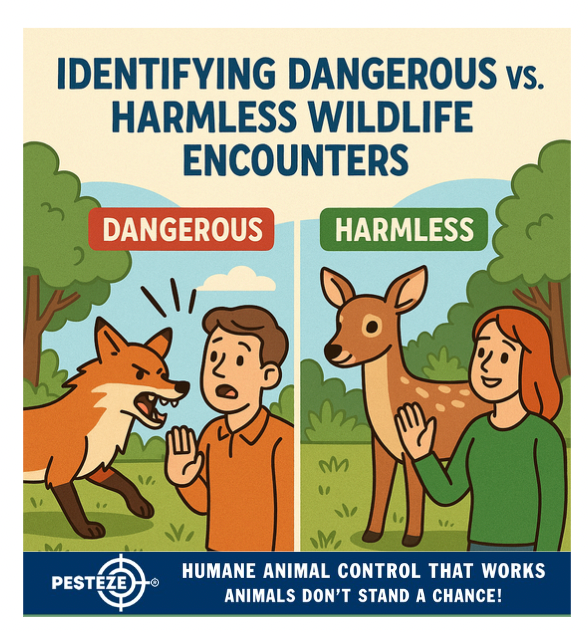IDENTIFYING DANGEROUS VS. HARMLESS WILDLIFE ENCOUNTERS

IDENTIFYING DANGEROUS VS. HARMLESS WILDLIFE ENCOUNTERS
SUMMARY
Not every wildlife encounter is a threat. This guide helps you distinguish between dangerous and harmless situations so you can respond appropriately and stay safe.
FEATURES
-
Body Language Clues: Recognize signs of aggression or fear in animals.
-
Species Awareness: Some animals are naturally more dangerous than others.
-
Distance Matters: Harmless encounters often involve animals keeping their space.
-
Time of Day: Nocturnal activity may indicate increased risk.
-
Health Signs: Rabid or sick animals behave unusually.
-
Safe Reactions: Learn when to observe calmly and when to call for help.
GUIDE DESCRIPTION
Wildlife encounters can happen almost anywhere—backyards, parks, hiking trails, or rural roads. While some interactions are safe and even enjoyable, others may pose risks to people and pets. Knowing how to identify dangerous vs. harmless wildlife encounters is essential for safety.
A key factor is animal body language. A harmless encounter often involves an animal that remains calm, keeps its distance, or shows little interest in you. For example, a squirrel scurrying up a tree or a deer grazing quietly is not a cause for alarm. In contrast, raised fur, growling, hissing, or lunging are signs of aggression or fear, indicating a potentially dangerous encounter.
Species awareness also matters. While birds, rabbits, and most small rodents are usually harmless, larger animals like coyotes, raccoons, bears, or snakes may present danger—especially if they feel cornered or threatened. Even typically harmless animals can become aggressive when protecting young.
Distance plays a role as well. An animal that maintains space is less of a concern than one that deliberately approaches. Approaching behavior, especially in predators, may signal danger. On the other hand, simply spotting wildlife from afar is usually a safe and harmless experience.
Consider the time of day. Many animals are nocturnal, so seeing raccoons, foxes, or skunks in daylight could indicate illness, stress, or abnormal behavior. This is often a warning sign of rabies or other diseases.
Health indicators are critical. Dangerous encounters often involve animals behaving erratically—stumbling, excessive drooling, or showing no fear of humans. These are red flags of possible rabies or other illnesses and should prompt immediate caution.
Finally, knowing the safe reaction is crucial. If an encounter seems harmless, observing quietly from a distance is fine. If the animal appears aggressive, sick, or refuses to leave, the safest response is to back away slowly and contact animal control.
By learning to recognize these differences, you can enjoy the beauty of wildlife while protecting yourself and your community.
- Saneeth Thota


Comments 0